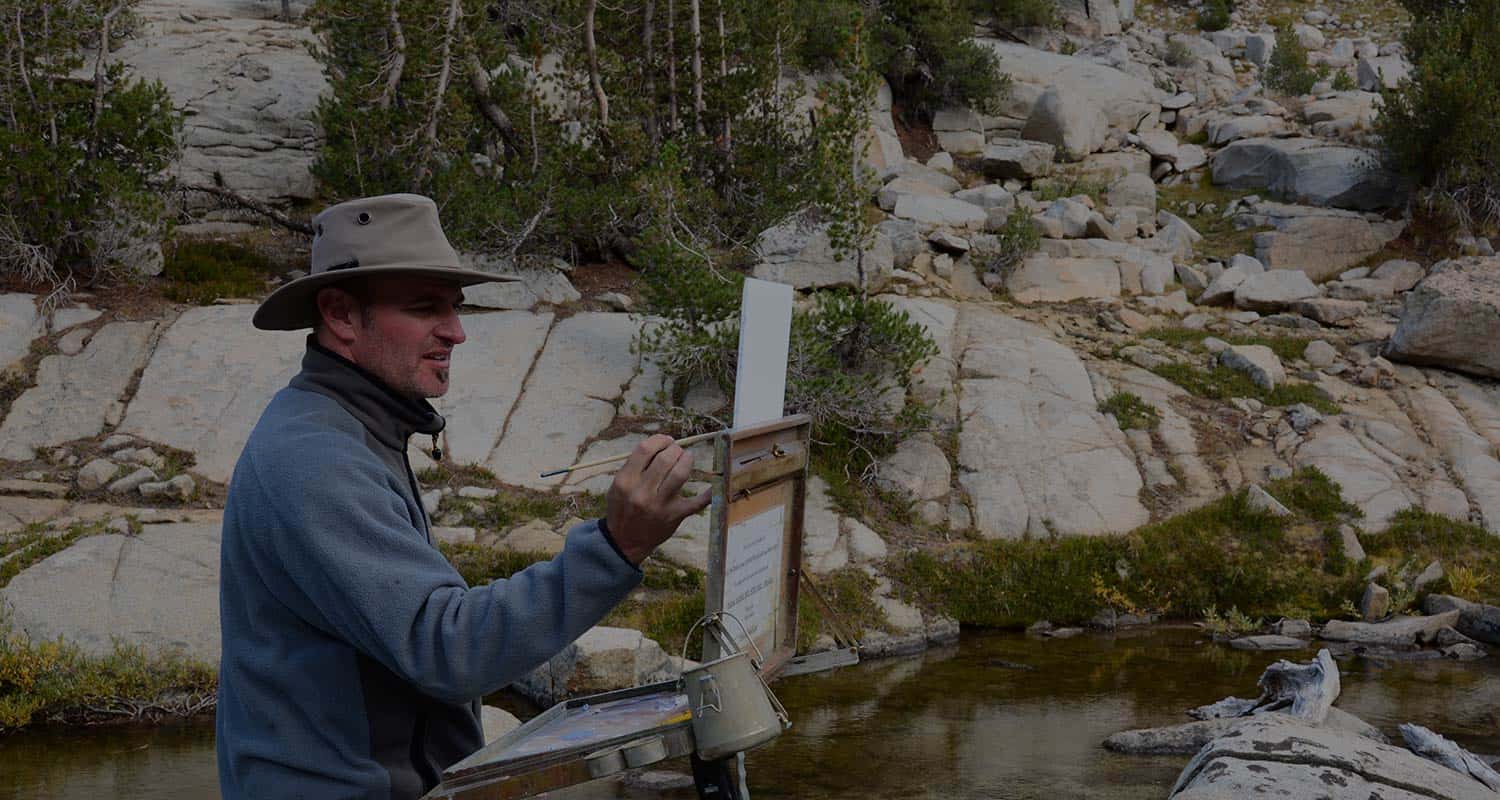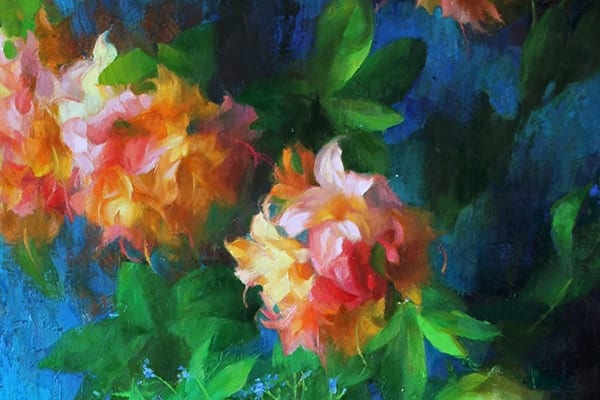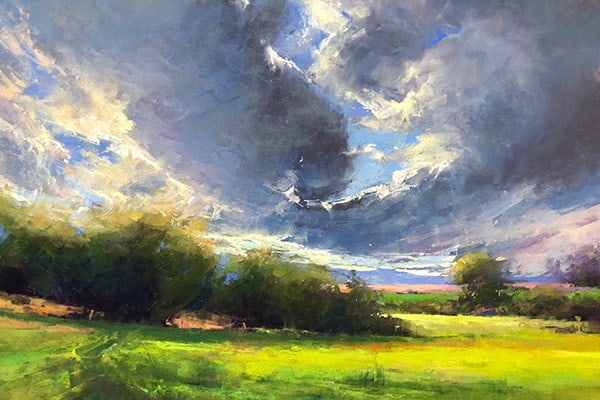Mitch Baird, Painter
Mitch Baird talks about seeing like a child, mixing the true color of nature, and going for it right from the start.
Mitch’s work is now on view at Turner Fine Art in Art That Inspires: A Curated Show of Master Painters.
Where are you from?
I was born in Utah, only lived there 8 years, and then we moved to Colorado. We were there a couple years before we made the move to just north of Seattle. I grew up there most of my middle school and high school, so I am kind of a northwest guy. I do think those early years really influenced my sensibilities to be outside, though.
Where do you live now?
Mesa, just east of Phoenix, Arizona.
You became interested in art at a very young age and your talent was recognized early on. Can you tell me about that?
The story goes I would go up to the mountains and I’d just draw. I’d draw the trees and the mountains and the lake. So in first grade, my teacher came up to my parents and said that I needed to get extra education in art. They showed my drawings and said this kid is painting perspective with roads going back into space and no kid ever does that. In the second grade, my parents put me in a painting class and I think I was in it for one session and it was with a bunch of kids. And the next week it was another day and in the evening. I walk in and it’s a bunch of these old grey haired ladies. I come to find out this was a Bob Ross painting class.
So art was always there but it didn’t necessarily take up my time or interest. I was a very active kid, I was skiing, playing soccer, or skateboarding and I didn’t want to sit in the room alone and fill up a blank page. I always knew I would grow up to be an artist “one day.” I didn’t know what that meant. Once I got to college and met my mentor, that guy really set the fire. He just opened the doors of what art is and what design is.
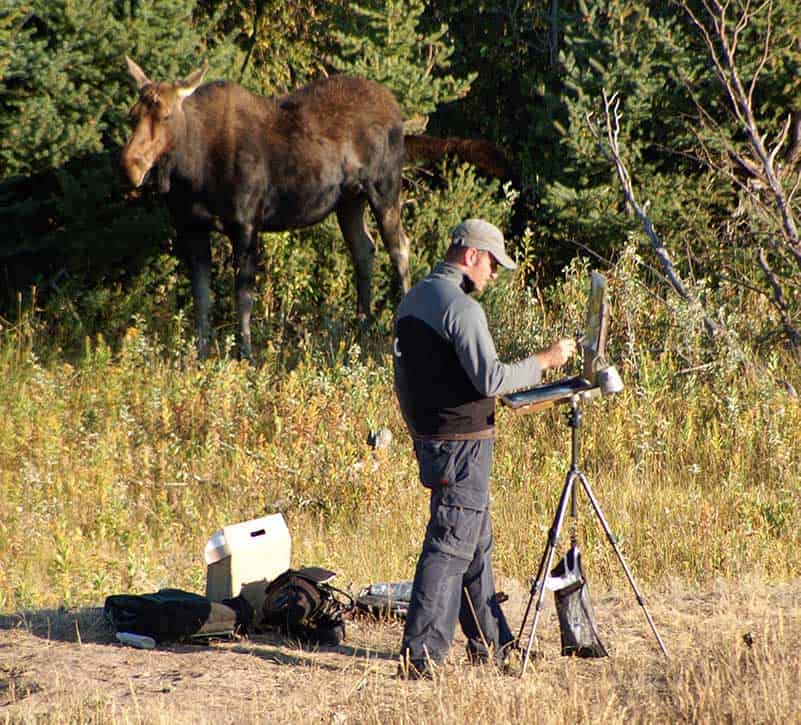
Mitch Baird gets a visitor while painting.
THE EXHIBITION
How would you describe the content of your work for this exhibition?
For me, inspiration can come in many ways. I react to things that are visually stimulating and it could be anything. Color, design, aesthetic, contrast…anything that appeases the eye to see beauty in it.
I do travel to Jackson a lot and it’s a favorite place of mine to paint. I have dozens of sketches that I have done from there and wanted to make into a bigger painting. So for this show, I said I’d create those larger works.
In this exhibition, do you have a favorite piece? Why?
Yes, the one of Holly Lake. It’s such a beautiful place. Just the effort to get there was momentous for me, and then to stand there and really explore that lake. The qualities of the water – it just has this color that’s even hard to identify, it’s such a neat color. So that one excites me.
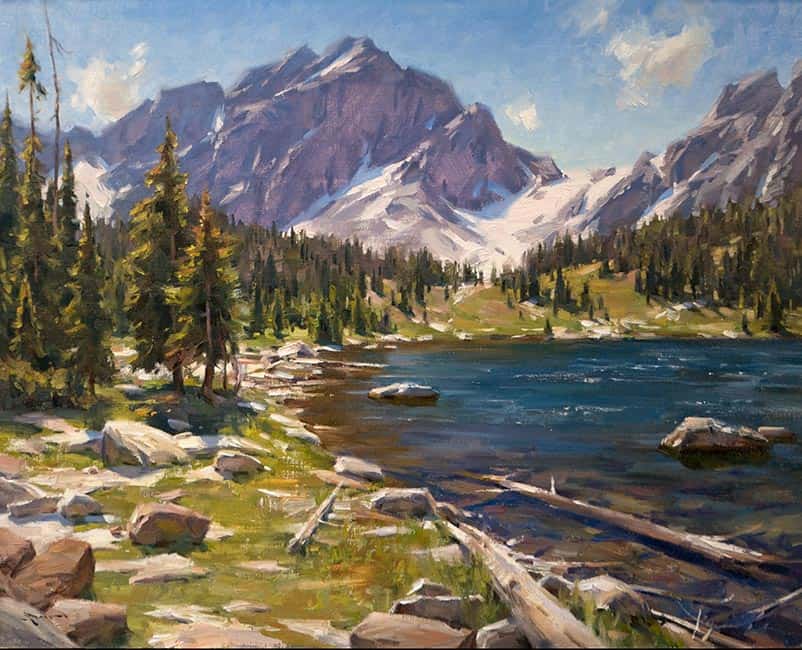
Mitch’s favorite piece in the exhibition, Holly Lake Summer.
THE ART
What mediums do you work with?
I adopted oils early on and it’s my go-to medium. Oil gives me the freedom to let the paint speak.
I need to have the paint open, which means wet and willing to be moved. I can put a color down build the one next to it and then come back and merge and play. I wouldn’t be able to do that with acrylics. Oil is great is because it can be worked thin to thick. So not only do you have variety in color and edges and values, but you have variety in the paint quality. And that’s what you want because if there’s no variety, there’s no interest.
What techniques do you employ to get the results you want?
I was trained as a direct painter which means you look at something and you see the value and the color and shape, and you put it down. I go for the gusto right from the beginning. I was trained where I can start in the middle of a painting and build it out like a puzzle. It just means you’re going for it right off the start and not trying to go back and mess with that initial statement.
What is the most important tool you use?
Because I am strictly using oil, the only other tool that I’m really keen on is the palette knife. I don’t use it like a palette knife painter, but there’s something you can get with a palette knife you can’t get in any other way.
So when you mix several colors together and put that paint down on the canvas, not only does it come down with a smooth flat mark, but within that mark there’s a marbling of the paint. The colors kind of intermix and you get this neat softened color variation that you can’t get when applying with a brush. The palette knife also gives me edges, really crisp sharp edges.
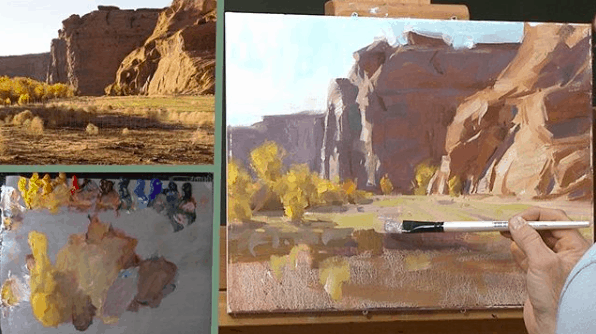
Mitch Baird shows a painting in progress.
What pleases you about the process?
Direct observation. When you’re observing directly, you have an emotional attachment. You see the form. You see the value. You see the light quality.
There’s also this visual scintillation of color that’s going on. For me to be out there directly painting, I am getting the full experience. I am seeing the edges. I am seeing the way the light falls on the forms. I’m seeing the value of the forms and the color of the forms. I never try to paint something that I haven’t experienced.
What is most challenging about the process?
Seeing the painting to its end. Mentally seeing the picture as a finished painting and actually getting to the finish. I’ve become pretty adept and I can copy pretty much what I see, but that doesn’t mean it’s a painting. I have to pull it together and make a statement, not just a rendering of what’s there.
How do you approach your work in order to perceive abstractly?
This is the core of what I teach: learning to see optically, not mentally. If I ask what color is the tree, you’d say green. Or what color is the sky: blue. So we come with these symbolisms that we learn early on from our childhood. We have to learn to unsee that symbolism to truly see what comes in across the retina, not what our brain interprets.
We need to learn to see like children. Infants just see blocks of value and color and that’s how we need to learn to re-see things as flat shapes. If we arrange those shapes correctly in their color value and their edges, that painting will look more realistic than if we were to attempt to paint it realistically. So that’s what it’s to see optically.
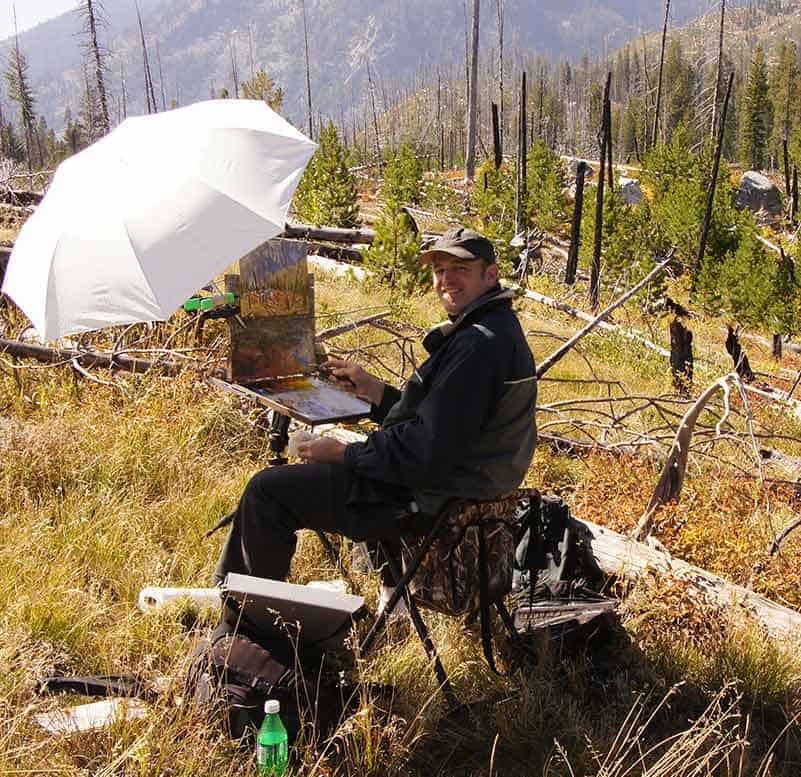
Mitch Baird observing from nature.
How would you describe your aesthetic?
I’m pegged as a naturalist. Yes I push color, but I find a challenge in trying to get the real color. It’s so difficult to truly mix a color and have it be identical to the color in nature. That’s why it’s so important for me to be outside and work from nature, because I really want to get what nature’s offering.
Has the light of Arizona influenced how you paint the mountains?
I see the atmosphere more clearly and I see the effects of those particles in the air more. I see the subtlety in it better, like the subtle change in one cliff face to the next. I see it in a smarter way, richer and deeper than I saw before.

Mitch Baird at Taggert Lake.
THE ARTIST
Do you have a subject have you painted the most?
I kind of don’t because I am so passionate about everything I look at. I will take whatever is in front of me if there is an inspiring composition.
What do you do when you’re stuck on a piece?
Being “stuck” usually comes when you don’t have a clear vision. I guess that implies you can’t solve a problem and painting is problem solving. I may just scrape it down and wipe it off and rework that area. You can’t let something be so sacred that you can’t completely obliterate it and come at it with fresh eyes.
What are you currently inspired by (reading, listening, other)?
Music is a huge part of my life and lately I’ve been listening to jazz. Bop jazz, quartets, and trios where it’s this totally different rhythmic approach that finds new ways of expressing sound. I paint under different music, but I find myself needing some type of rhythm or beat with a heavier drive. Depending on the mood it gets me flowing in a certain way.
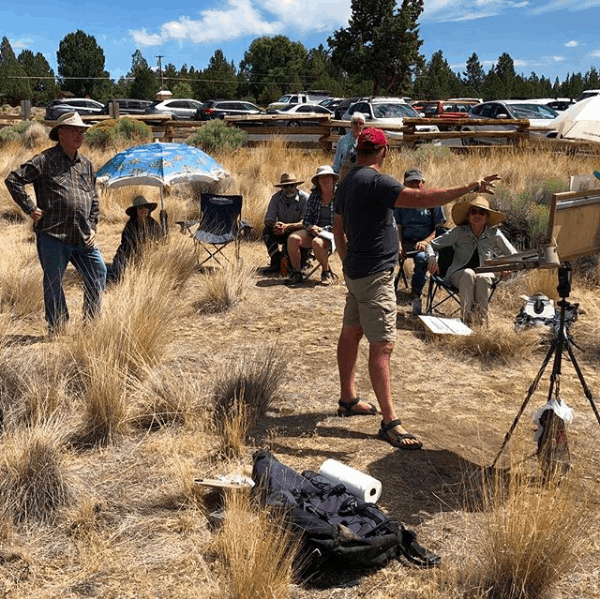
Mitch also teaches others to see abstractly.
What do you do besides your art?
I restore vintage scooters, old Italian Vespas, Lambretta scooters, and rare german bikes. I have been collecting and storing for about 30 years. One, in particular, is supposed to be the only one in the United States. It’s an old ‘50s factory style Vespa and I have to restore it – that’s the next one up. There is a rare German scooter, probably no more than 100 on the planet.
So that’s my other interest: restoring these really cool bikes. I used to do these rallies all around the country and, in fact, I proposed to my wife at one of these rallies.
What’s the best advice you’ve ever been given?
It’d be the idea that my teacher would say: Lie and cheat and steal to find the truth and get it right.
I’m always seeking the truth with what I am painting. It’s an idea that has always been so powerful to me and, because I am a man if faith, this is God’s truth. He has given us this beautiful creation and I am only a tool here on the planet to share in its magnificence.
This conversation with Mitch Baird has been edited for brevity and clarity.


